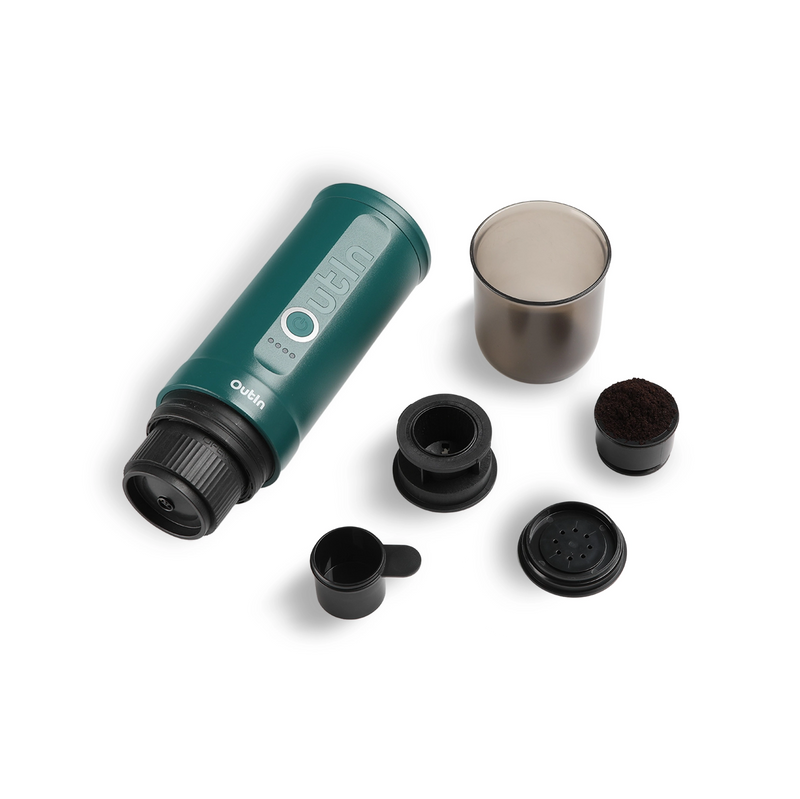Unlock Your Perfect Brew: The Ultimate Guide to Choosing the Best Portable Espresso Machine!
In recent years, portable espresso machines have surged in popularity, becoming a staple for coffee enthusiasts who crave the perfect brew on the go. Whether you're an avid traveler, a busy professional, or simply someone who enjoys the rich, robust flavor of espresso, these compact devices offer the convenience of brewing high-quality coffee wherever life takes you. The ability to enjoy a freshly brewed espresso, even while hiking in the mountains or on a long road trip, is a game-changer for many. However, with a plethora of options available, choosing the right portable espresso machine tailored to your individual needs can be daunting. This guide aims to simplify your decision-making process by examining the different types of machines, their features, and how to find the best fit for your lifestyle.

Understanding Portable Espresso Machines
At its core, a portable espresso machine is designed to brew espresso in a compact format, offering convenience without compromising quality. Unlike traditional espresso machines, which can be bulky and require an electrical outlet and extensive setup, portable models are lightweight and often battery-operated or manually powered. There are several types of portable espresso machines available on the market today. Manual machines require you to exert pressure to extract espresso, providing a hands-on brewing experience. Semi-automatic machines, on the other hand, automate some aspects of the brewing process while still allowing for user control. Fully automatic machines take convenience to the next level by handling everything from grinding to brewing at the push of a button. Each type has its unique advantages, catering to different preferences and brewing styles.
Key Features to Consider
When it comes to selecting a portable espresso machine, several key features should be at the forefront of your mind. First and foremost is size and weight; after all, you'll want a machine that is easy to transport. Look for models that are compact but still offer a robust brewing capacity—ideally, enough to satisfy your espresso cravings without being too cumbersome. Ease of use is another significant factor; consider how intuitive the machine is, especially if you are new to brewing espresso. Additionally, pay attention to the cleaning requirements. Some machines have multiple parts that require thorough cleaning after each use, while others are more straightforward to maintain. Lastly, think about the materials used in construction. A durable machine will withstand the rigors of travel while delivering consistent results.
Comparing Different Models
As you navigate the world of portable espresso machines, it's helpful to compare various models based on their features, usability, and user feedback. Manual machines are often praised for their ability to produce high-quality espresso with minimal investment. However, they require a bit of practice to master the technique. Semi-automatic machines typically offer a balance between control and convenience, making them a popular choice for those who want to experiment with their brewing process without extensive training. Fully automatic models, while convenient, can vary significantly in quality and ease of use. Many users appreciate the one-touch brewing feature, but some find that the espresso produced lacks the depth of flavor achieved with manual or semi-automatic machines. A friend of mine recently purchased a semi-automatic model, and she enjoys the flexibility it offers in terms of brewing strength and flavor. However, she also mentioned that the cleaning process can be a bit tedious, which is something to consider if you're short on time. Ultimately, weighing the pros and cons of each type will help you find a model that aligns with your coffee preferences.
Price Range and Value for Money
When it comes to pricing, portable espresso machines vary widely based on features, materials, and brand reputation. On the lower end of the spectrum, manual machines tend to be the most affordable, making them accessible for beginners. As you move up the price range, semi-automatic and fully automatic machines offer additional features and convenience but come with a higher price tag. Factors influencing the price include the machine's build quality, the complexity of its design, and any additional features like built-in grinders or temperature control. To determine the best value for your money, consider what features are most important to you and how often you plan to use the machine. Investing in a higher-quality machine may be worth it if you plan to use it regularly, as it can provide a better brewing experience and durability over time.
Choosing the Right Portable Espresso Machine
In summary, choosing the right portable espresso machine involves careful consideration of your personal preferences and needs. From understanding the different types of machines available to weighing key features and prices, this guide provides a comprehensive overview to help you make an informed decision. Remember that the best machine is one that fits seamlessly into your lifestyle while delivering the high-quality espresso you crave. Take your time to compare options and read user feedback to ensure you unlock your perfect brew, wherever you may be!



